-
Call Now
1800-102-2727
Autotrophic nutrition: Photosynthesis, Chemosynthesis, Practice Problems and FAQs
We need energy to perform work or perform life processes. This energy we get from the food. We eat a variety of food everyday, right? It includes cereals, pulses, fruits, vegetables, meat and eggs. You know that we get these fruits and vegetables from plants. But do you know how plants get their food? We humans depend on producers like plants for our food. But, most of the plants do not depend on other organisms for their food. They prepare their own food from inorganic substances like water or carbon dioxide in the presence of sunlight and chlorophyll. This process is known as photosynthesis. Therefore, they are known as producers or autotrophs.

GIF: Photosynthesis in plants
There are some organisms that can prepare their own food without using solar energy. Instead of this, these organisms mainly use energy obtained from exergonic chemical reactions to prepare their food and this process is known as chemosynthesis. Let’s understand more about autotrophic nutrition in this article.
Table of contents
- Mode of nutrition
- Autotrophic nutrition
- Photosynthesis
- Chemosynthesis
- Significance of autotrophs
- Differences between chemosynthesis and photosynthesis
- Practice Problems
- FAQs
Mode of nutrition
The mode of nutrition is described as the method by which an organism obtains its food. There are many living creatures on the Earth and every living organism has a different way of obtaining food. Therefore, one can say that organisms differ in their modes of nutrition. The organisms can be classified into two broad categories on the basis of their mode of nutrition as follows:
- Autotrophic mode of nutrition
- Heterotrophic mode of nutrition
Autotrophic nutrition
The word autotroph is composed of two words, ‘auto’ means self and ‘troph’ means nutrition. The literal meaning of autotrophic nutrition is self nutrition. Therefore, in the process of autotrophic nutrition, organisms make their own sustenance from straightforward inorganic components including water, mineral salts and carbon dioxide. The common example of organisms showing autotrophic mode of nutrition is green plants and autotrophic bacteria.
CO2

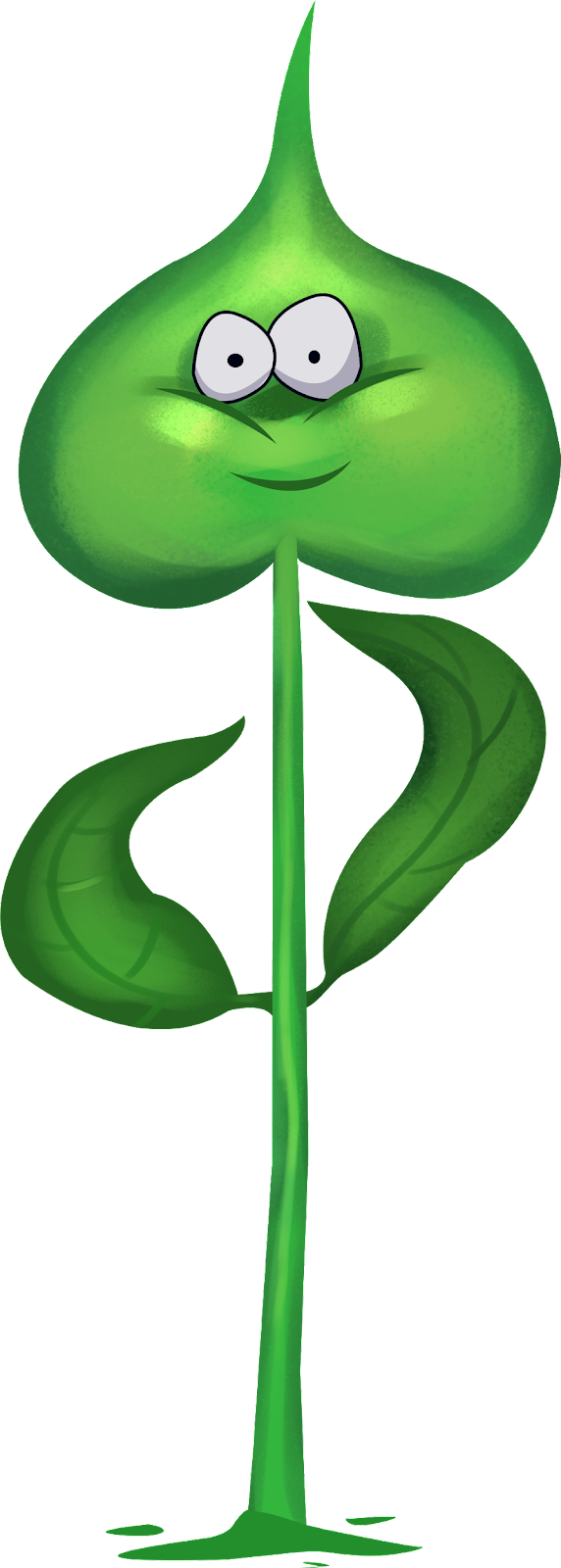
GIF: Photosynthesis
Classification of autotrophic mode of nutrition
The autotrophic organisms prepare their own food by two ways as follows:
- Photosynthesis
- Chemosynthesis
Photosynthesis
In this process the chlorophyll containing cells synthesise carbohydrates from carbon dioxide and water using the energy of sunlight. The majority of photosynthesis takes place in the plant's leaves, which are also referred to as the ‘kitchen of the plant.’ In some instances, photosynthesis may even occur in the stems. Glucose produced by photosynthesis is converted into starch and gets stored in most cases.

Fig: Equation for photosynthesis
Parts involved in photosynthesis in plants
In the photosynthesis process, different parts of a plant are involved that play different roles as follows:
Leaves
They are known as the food factories of the plant. It possesses chloroplasts and with the help of photosystems it receives sunlight.

Fig: Leaves
Stomata
It is located in the epidermis of leaves mainly and helps in the exchange of gases. It takes in carbon dioxide from the atmosphere for photosynthesis and allows the exit of oxygen which is formed as a byproduct in photosynthesis.

Fig: Structure of stomata
Roots
They absorb water and minerals from the soil and transfer them to various plant components like leaves, stems, flowers etc.

Fig: Absorption of water by roots
Significance of photosynthesis
Significances of photosynthesis are listed below:
- Solar energy is converted into chemical energy.
- Useful products like fodder, firewood, timber, drugs, fruits and vegetables are produced by this process.
- Utilising external components, photosynthesis serves as a means of energy storage.
- With the aid of sunlight and chlorophyll, plants absorb carbon dioxide and transform them into carbohydrates.
- Plants become the producers in the food chain.
- Carbohydrates are synthesised by the photosynthesis to serve as the plant's energy source.
- The remaining carbohydrates are stored as starch in various parts like tubers, corms, bulbs etc.
- A byproduct, oxygen is released into the atmosphere which is used by other organisms for respiration.
- Coal, petroleum and natural gas are formed by the photosynthetic organisms.
- The oxygen used in respiration and burning are compensated by this process.
Photoautotrophs
The photoautotrophs use light energy for the synthesis of food. Light energy is used to fix carbon dioxide into glucose. Green plants, golden algae, diatoms and cyanobacteria are examples of photoautotrophs. The food that autotrophs produce gives them both the energy to perform work and the carbon for making various organic compounds like proteins, hormones, growth factors etc. 99% of the energy needed for life on the Earth comes from photosynthesis.

Fig: Photoautotrophs
Photoautotrophic bacteria
The bacterial pigments are involved in this process. They perform two types of photosynthesis based on the species as follows:
Oxygenic photosynthesis
In oxygenic photosynthesis water is used as an electron donor and produces oxygen as a by-product. They show sulphide driven anoxygenic photosynthesis also. They possess carotenoids, chlorophylls, and phycobiliproteins. Examples include cyanobacteria.
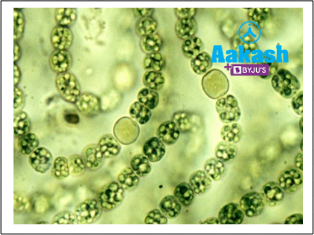
Fig: Cyanobacteria
Anoxygenic photosynthesis
They do not split water to obtain the reducing power in photosynthesis. In place of water these bacteria use the reducing power of hydrogen sulphide, thiosulphate, hydrogen or aliphatic compounds. No oxygen is evolved in bacterial anoxygenic photosynthesis. Examples include green nonsulfur bacteria like Chloroflexus, green sulphur bacteria like Chlorobium, purple nonsulfur bacteria like Rhodobacter and purple sulphur bacteria like Thiospirillum.

Fig: Equation of anoxygenic photosynthesis
Chemosynthesis
Some autotrophs make their own food using chemical reactions rather than light energy. Living things create organic substances by obtaining energy from exergonic chemical reactions, usually when there is no sunlight. Chemical energy is created when chemical compounds, organic or inorganic, are oxidised. The chemical energy obtained from oxidation reactions is trapped as ATP molecules. This energy is then utilised in the assimilation of carbon dioxide with the help of hydrogen brought from sources other than water. Therefore oxygen is not evolved in this process. The recycling of nutrients like nitrogen, phosphorus, iron, and sulphur depends on chemosynthetic bacteria. Examples include sulphur bacteria, Nitrosomonas, hydrogen bacteria, and nitrifying bacteria.
Chemoautotrophs
These organisms have a chemoautotrophic mode of nutrition that means they convert one type of chemical into another. Chemoautotrophs are typically found in low light environments that are rich in compounds which are poisonous to other organisms. However, they effectively utilise these molecules by turning them into sugars like glucose, which are then utilised in cellular respiration to produce energy. They transform hydrogen sulphide present in the smoke emitted by the deep-sea hydrothermal vents. Some scientists even think they may have existed on the ominous and gloomy moons of Jupiter. These organisms are thought to be among the first types of life to have existed on the Earth. Chemosynthetic bacteria are important for recycling nutrients like sulphur, nitrogen, phosphorus, iron, and nitrogen.
Types of chemotrophs
The chemoautotrophs are categorised into the following types:
Nitrifying bacteria
These bacteria obtain energy by oxidising nitrogenous compounds. The nitrification is done in the following two steps:
- Conversion of NH3 (ammonia) to NO2- (nitrite) by Nitrosomonas and Nitrococcus.
NH4+ + 2O2 → NO2 + 2H2O + Energy
- Conversion of NO2- (nitrite) to NO3- (nitrate) by Nitrobacter and Nitrocystis.
2NO2- + O2 → 2NO3- + Energy
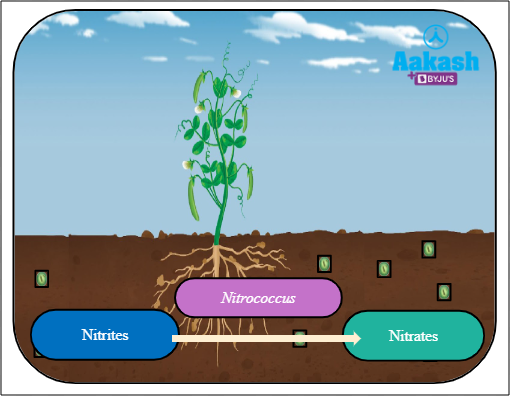
Fig: Conversion of nitrites into nitrates
Iron bacteria
They convert ferrous iron (Fe2+) to ferric iron (Fe3+). By making the iron insoluble, this process results in the rust-colored, slimy deposit that coats stream beds. Examples include Ferrobacillus ferrooxidans.
4FeCO3 + 6H2O + O2 → 4Fe(OH)3 + 4CO2 + Energy
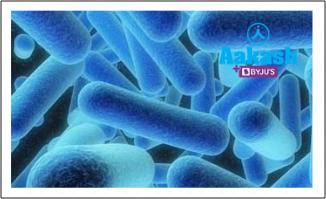
Fig: Ferrobacillus
Hydrogen oxidising bacteria
These types of bacteria oxidise H2 and fix CO2 to provide energy and synthesise cellular materials. Examples include Hydrogenomonas. This bacteria is also known as knallgas bacteria. These bacteria oxidise hydrogen with oxygen as a final electron acceptor.
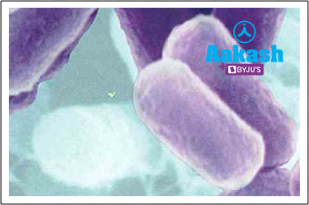
Fig: Hydrogenomonas
Methane bacteria
Methane bacteria are the only organisms that are capable of producing methane. These bacteria are known as methanogens. These bacteria produce methane from CO2, H2, or tiny organic compounds like acetate, formate, methylamine etc. Examples include Methanosarcina.
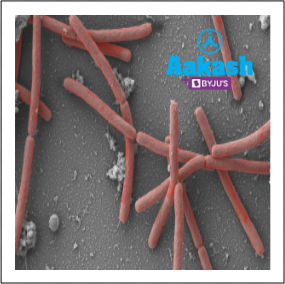
Fig: Methanogens
Sulphur oxidising bacteria
These bacteria are of two types as follows:
One that converts H2S (hydrogen sulphide) to sulphur and energy. For example, Beggiatoa.
2H2S + O2 → 2S + 2H2O + Energy
The other one includes bacteria that convert sulphur to H2SO4 and energy. For example, Thiobacillus and Thiooxidans.
2S + 2H2O + 3O2 → 2H2SO4 + Energy

Fig: Thiobacillus
Significance of autotrophs
- Autotrophs are very important for the sustaining of life on the Earth.
- Through photosynthesis, plants fix carbon dioxide into sugar. This is why they are referred to as producers.
- Plants serve as the foundation for energy pyramids, food chains and food webs.
- Autotrophs form a source of fuel for heterotrophs.
- They form the basis for the development of higher ecosystems.
- Autotrophs are the first life that exist on the Earth. Heterotrophs are further evolved from autotrophs.
Differences between chemosynthesis and photosynthesis
The following are the major differences between chemosynthesis and photosynthesis.
Chemosynthesis |
Photosynthesis |
|
It does not require sunlight |
Sunlight is necessary for providing energy required for the synthesis of food. Some bacteria obtain energy from infrared rays also |
|
It can occur in the presence or absence of sunlight |
It occurs in the presence of light |
|
It is an anoxygenic process |
It is an oxygenic process except the bacterial anoxygenic photosynthesis |
|
Energy required for synthesis of food is obtained by the oxidation of inorganic substances |
Solar energy is trapped by the pigments |
|
No net gain of energy from outside the planet Earth |
Net gain of energy from outside the planet Earth (Sun) |
|
It is a slow process |
It is comparatively a faster process |
|
Examples include Thiobacillus, Thiooxidans etc.
|
Examples include green plants, cyanobacteria etc.
Fig Photoautotrophs |
Practice Problems
- What are the requirements of a photoautotrophic mode of nutrition?
- Carbon dioxide and water
- Chlorophyll
- Sunlight
- All of the above
Solution: All of the ingredients listed above are necessary for the autotrophic mode of nutrition. Simple inorganic substances like carbon dioxide and water that are present in the environment is used by the organism to create its own food with the aid of sunlight energy, in the photoautotrophic nutrition. Chlorophyll, a pigment with a greenish colour, absorbs the sunlight. Hence, the correct option is d.
2. In which Kingdom, autotrophic metaphytes are classified?
- Animalia
- Fungi
- Plantae
- Protista
Solution: The term ‘autotroph’ refers to organisms that can produce their own food. Multicellular plants are known as metaphytes. Therefore, autotrophic metaphytes are members of the Plant Kingdom. Hence, the correct option is c.
3. The autotrophic thallophytes that contain chlorophyll are known as _____________.
- Algae
- Angiosperms
- Fungi
- bryophytes
Solution: Algae are autotrophic thallophytes that possess chlorophyll, which enables them to engage in photosynthesis and generate their own sustenance. They possess a thallus-like body and are called thallophytes. Hence, the correct option is a.
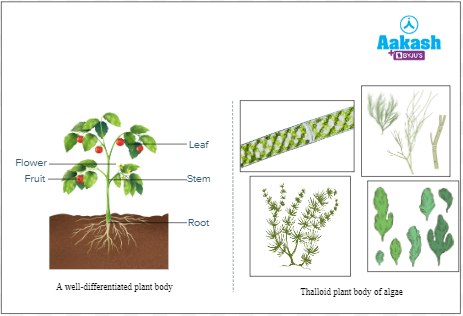
Fig: Difference between plant body of higher plants (angiosperms) and Algae
4. From the given options, which molecule acts as a cellular energy reserve in photoautotrophs?
- Glycogen
- Starch
- Protein
- Fatty acid
Solution: Carbon dioxide is fixed into glucose in the presence of sunlight and chlorophyll by photoautotrophic organisms. They use water in this process. Glucose is converted as starch and gets stored in them. Examples include green plants. Hence, the correct option is b.
FAQs
- Why do photoautotrophs need nitrogen?
Answer: Nitrogen is absorbed from the soil as nitrate and nitrite ions through absorption by roots or with the aid of symbiotic bacteria in the root nodules. Nitrogen is a crucial component in the production of proteins. It is required for the production of growth factors, hormones, enzymes etc.
- Is virus autotroph or heterotroph?
Answer: Virus is neither an autotroph nor a heterotroph. This is because they show no metabolism. They are obligate intracellular parasites and depend on the host organism for all their living processes. Examples include Human Immunodeficiency Virus (HIV).
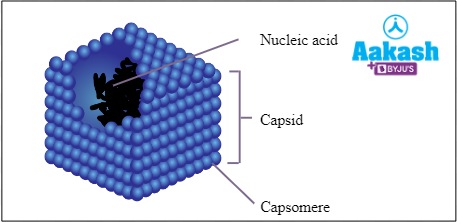
Fig: Parts of a virus
- In which organelle does photosynthesis occur in plants?
Answer: The process of photosynthesis occurs in the chloroplast in plants because the light-trapping pigment, chlorophyll along with photosystems is present here.

Fig: Photosystems on the thylakoid membrane
- What are guard cells?
Answer: Guard cells are the kidney-shaped cells around the stomata. Their function is to regulate the opening and closing of stomata.
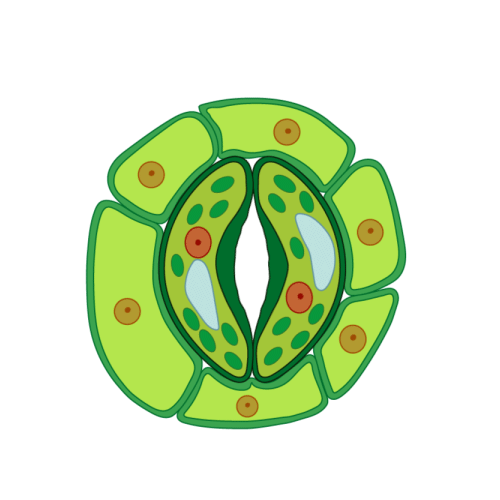
GIF: Stomata



 Fig: Thiobacillus
Fig: Thiobacillus
